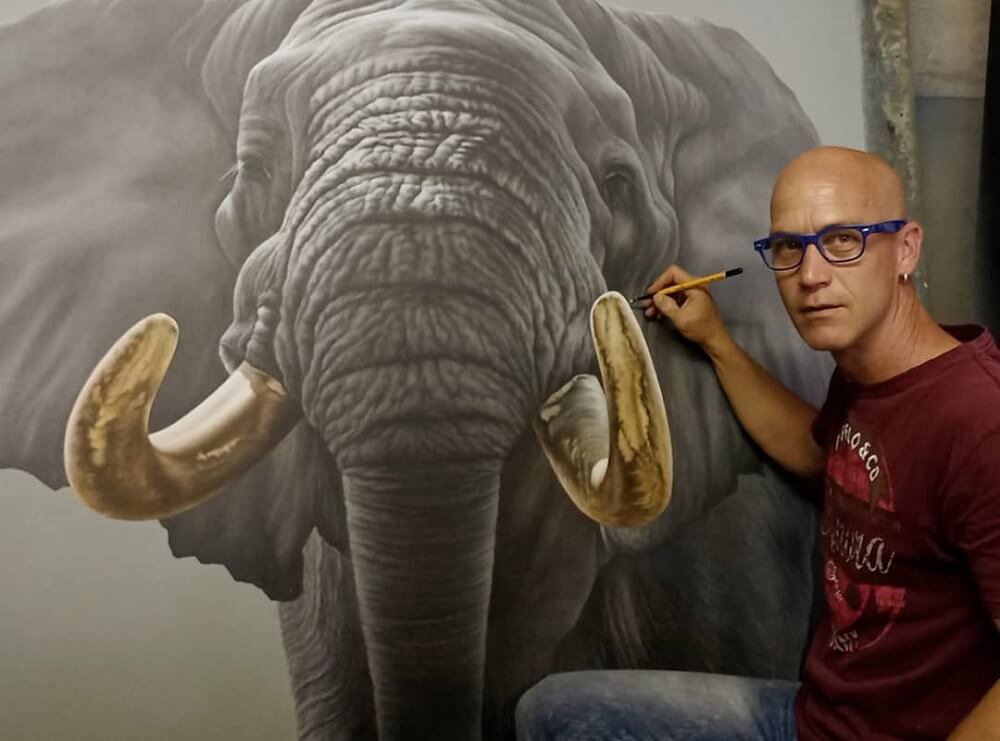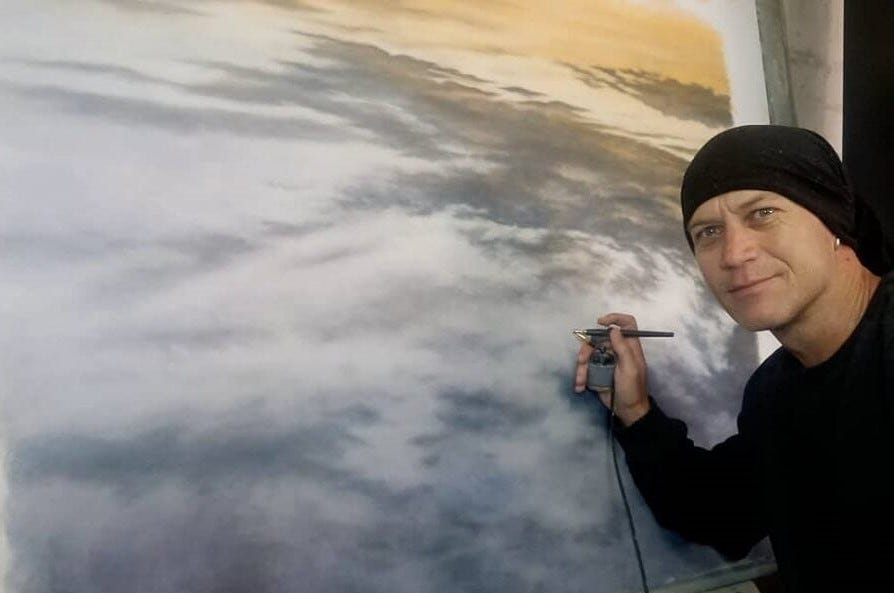For Dawie Mocke (@dawie_mocke_wildart), inspiration stems from the wild animals that roam South Africa, but it was actually a horse that changed the course of his life. A few months after selling a drawing, the South African artist quit his job at a restaurant and took up drawing full time. He now sells his realistic paintings, as he tames wild life and turns them into picture-esque paintings.
How would you describe yourself?
I’m a charismatic person always trying to be the centre of attention...LOL. I’m fun-loving, caring and I have a soft spot for all types of cats, because they are my spirit animals.
How did you get involved in art?
While working in restaurants for 12 years after school, I always had the urge to create. I was always doodling around on pieces of paper with pens and pencils, but never had the courage to do art full time until one day, someone bought a drawing of horse I did in pencil and it made me think that if I continue doing this and can match my salary, then I could do it full time, and so it happened after 3 months...I was going to do art forever...
How has your career evolved?
It was tough in the beginning, I didn’t know what the market wanted and tried everything until I saw that more of my sales came from wildlife - more specifically the South African wildlife, and that is how I got to be known as a wildlife artist. For a couple of years, I avoided paint and only drew wildlife in pencil or graphite because I found it easier to do. I slowly started using acrylics to get out of my comfort zone and I found it extremely satisfying, I loved the fast-drying times of it.
You are self-taught, how did you learn to develop your photo-realism style?
Yes, I never had formal training and had to figure out how this thing called ‘paint’ works. Trial, error and many mistakes got me to this point and I’m still learning. As soon as you know what colours and what brushes do what, the process becomes so much easier. I see a lot in photographs and I reference them. I also love detail, so I sometimes add more.
How did you build the courage to show people new works?
I can be as good as anybody else is, I also try to teach my children and I always take criticism as a positive and learn from that. I don’t see art as a competition and everybody creates differently. Some of my work people like and others not so much, however I never take it personally, there’s a market for everything, so I keep on creating.
Your works are packed with action and energy, how do you capture these moments and translate them onto canvas?
I follow some great wildlife photographers and a lot of their images give me inspiration. When I see a photo reference I can already tell if it will make a good artwork. I like giving an image life, through action, feeling and trying to tell a story. Depending on the mood of the reference I’ll change either the background or saturation of the subject to create a warmer or colder feeling. My painting names also play a big role in making the observer steer into a particular direction of understanding and feeling.
How often do you practice? Do you have any practicing motivation advice?
For the past 18 years I’ve been a full-time artist, this means I do art all day and every day, so there are no hours for doing art, only passion and knowing you’ll never work again. If art’s your hobby I would advise to practise as much as you can and never compare yourself to others, look at and study other artworks and techniques but use it as motivation, practise, practise, practise.
What colour palette do you lean to and why?
Because of my background in wildlife I tend to lean toward more earthy hues, siennas, ochres and umbers, but when I get bored I try playing around with bright colours and palette knives. I like trying out other styles, art is my pastime and my hobby.
What are the best tips you’ve learned coming into the industry?
Never compare your creativity to others and do what you want, for there are no rules to art, push boundaries and think outside the box...even if you have to paint on cardboard. Express your thoughts no matter how you get there, it's therapeutic.
What’s a lifesaving technique or strategy that you’ve learnt?
I had to teach myself some shortcuts and this came from a lot of practicing. On highlights where the sun hits the subject I use titanium white underneath to make the transparent top colour “pop”, the white makes it look luminous and come alive. I water down the colour I want it to be and use it as a wash over the white. My paintings do take a long time because it's layered with a lot of detail, but because I understand how to get to the end I’m not too concerned about time, I enjoy every step in the process.
What’s your favourite piece or pieces of art you’ve done?
My latest artworks are usually what excites me the most, however there are some that stand out for me, I love creating a feeling through eyes and if there are no eyes on a subject, I will try and look for contrasts in the juxtapositions of light and dark.
We hope South African artist Dawie Mocke, has inspired you to create. Show us what you create and share your projects with us! #montmarteart or tag @montmarteart on Instagram or Facebook.
Or check out more of our featured artists here.





























